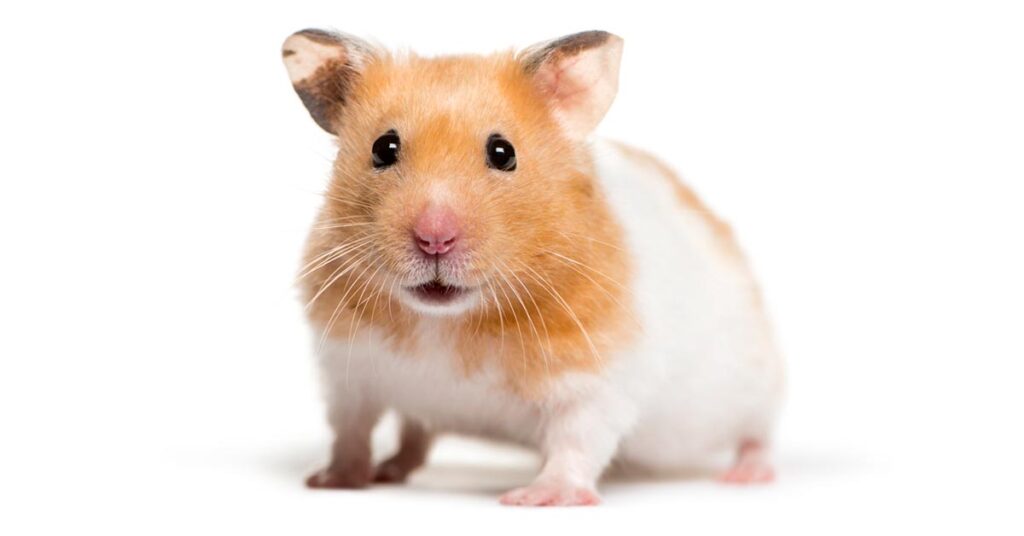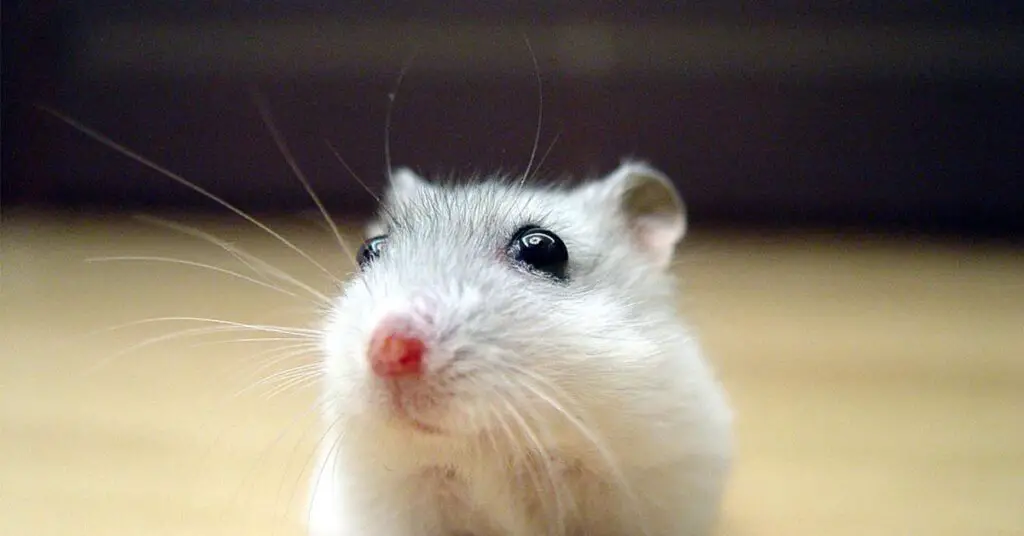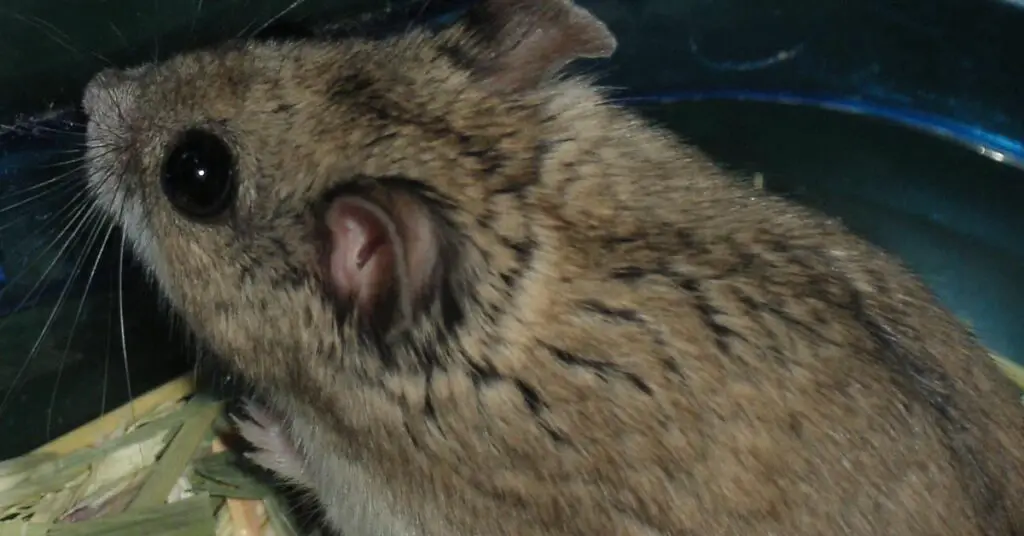Hamsters are a popular pet choice for many people. They are small, cute, and easy to care for, making them perfect for those who are looking for a low-maintenance pet. However, not all hamsters are the same. In this article, we will explore the different types of hamsters and the characteristics that distinguish them. Understanding the different types of hamsters will help you make an informed decision when choosing a pet hamster.
Table of Contents
Syrian Hamster
The first type of hamster is the Syrian hamster. Also known as the Golden hamster, the Syrian hamster is the most common type of hamster kept as a pet. Syrian hamsters have a round, chubby body and short, thick fur that can be golden, brown, black, or white. They have a distinctive black stripe running down the middle of their back. They are typically around 6 inches long and have a lifespan of 2-3 years.

Syrian hamsters are known for their solitary nature, they are known to be aggressive towards other hamsters and cannot be housed together. They are also nocturnal animals, meaning they are active during the night and sleep during the day. Syrian hamsters are known to be quite territorial and can be easily tamed with proper handling and socialization. They are also known to be great pets for children and make good companions for adults.
Dwarf Hamster
The next type of hamster is the Dwarf hamster. Dwarf hamsters are smaller than Syrian hamsters, typically around 3-4 inches long. They have a slim, elongated body and short fur that can be various colors such as brown, black, white, and grey. Dwarf hamsters are known to be more active and sociable than Syrian hamsters, and can be housed in pairs or small groups.

There are four types of Dwarf hamsters: Campbell’s Dwarf, Chinese, Winter White, and Roborovski. Campbell’s Dwarf hamsters are the most common type of Dwarf hamster kept as a pet. They have a distinct black and white coloration. Chinese Dwarf hamsters are slightly smaller than Campbell’s and have a more grayish-brown fur. Winter White Dwarf hamsters have a white fur that turns brown in the winter. Roborovski Dwarf hamsters are the smallest of all Dwarf hamsters, with a size of around 2 inches. They have a sandy color fur.
Chinese Hamster
Another type of hamster is the Chinese hamster. Chinese hamsters are similar in size to Dwarf hamsters and have a similar body shape. They have a grayish-brown fur and a distinctive white spot on their belly. Chinese hamsters are known for their calm and docile nature, making them great pets for children and adults alike. They are also known to be less active than Dwarf hamsters, and can be housed in pairs or small groups.

Hybrid Hamsters
Finally, there are hybrid hamsters. Hybrid hamsters are the result of breeding different types of hamsters together. The most common types of hybrid hamsters are Dwarf-Syrian and Chinese-Syrian. These hybrid hamsters are usually larger than Dwarf hamsters and have a mix of physical characteristics from both parent breeds. They can make great pets, but it’s important to keep in mind that their behavior and personality can vary greatly depending on their specific genetic makeup.
Cost And Availability
The cost of a hamster can vary depending on the breed and location. Syrian hamsters are typically the most common and widely available type of hamster and can be found at most pet stores. They typically cost around $10-$25. Dwarf hamsters, Chinese hamsters and hybrid hamsters can also be found at pet stores but may be less common. Their prices can range from $10 to $20. However, it is also possible to find them at specialized breeders at a higher cost.
Availability can also vary depending on location and season. Some breeds may be more difficult to find in certain areas or during certain times of the year. It’s always recommended to check with multiple pet stores or breeders to find the type of hamster you’re interested in.
Here is a link to PetSmart‘s hamster section where you can find pricing.
It’s worth noting that prices for exotic or rare breeds may be higher, and availability may be limited. Additionally, the cost of owning a hamster also includes the cost of proper care such as a suitable cage, food, bedding, toys, and veterinary care.
Suitability
The overall suitability of each type of hamster for different types of living situations can vary.
Syrian hamsters are generally considered suitable for apartment living as they are small and do not require a lot of space. They are also known to be great pets for children and adults, and can be easily tamed with proper handling and socialization. However, their solitary nature means they should be kept alone, and they are also nocturnal animals, so they may be more active at night when people are sleeping.
Dwarf hamsters are also suitable for apartment living as they are small and do not require a lot of space. They are known to be more sociable than Syrian hamsters and can be housed in pairs or small groups. They are also active during the day which make them more suitable for households where people are awake during the day. However, it’s important to monitor the interactions between Dwarf hamsters to ensure they get along and to separate them if there is any signs of aggression.
Chinese hamsters are also a good option for apartment living as they are small and don’t need a lot of space. They are known for their calm and docile nature, making them great pets for children and adults. They are also less active than Dwarf hamsters and can be housed in pairs or small groups.
Hybrid hamsters can also be suitable for apartment living, but it’s important to keep in mind that their behavior and personality can vary greatly depending on their specific genetic makeup. Therefore, it’s important to research the traits of the specific hybrid you are considering before making a decision.
Households With Children
For households with children, Syrian and Chinese hamsters are generally considered suitable as they are known to be great companions and can be easily tamed with proper handling and socialization. Dwarf hamsters can also make good pets for children but it’s important to supervise the interactions between children and the hamsters to ensure their safety.
Households With Other Pets
For households with other pets, Syrian and Chinese hamsters are generally considered suitable as they are known to be solitary animals and can be kept in separate cages. Dwarf hamsters can also be kept with other pets as long as they are housed in separate cages and are not in danger of being harmed by other pets. However, it’s important to keep in mind that other pets may be curious about the hamsters and may try to get too close, which can be stressful for the hamsters.
Overall, it’s important to consider the specific needs and characteristics of each type of hamster when deciding which one is most suitable for your living situation. Proper research and understanding of their specific needs can help ensure that you choose a pet that will thrive in your home.
Conclusion
In conclusion, there are several types of hamsters to choose from when looking to add a pet hamster to your household. Syrian hamsters are the most common type of hamster kept as a pet, known for their solitary nature and being great for children and adults. Dwarf hamsters are smaller and known for their sociability and can be housed in pairs or small groups. Chinese hamsters are known for their calm and docile nature, and hybrid hamsters are the result of breeding different types of hamsters together.
Frequently Asked Questions
Q: What are the different types of hamsters?
A: The main types of hamsters are Syrian, Dwarf, Chinese, and hybrid hamsters. Syrian hamsters are the most common type of hamster kept as a pet, known for their solitary nature and being great for children and adults. Dwarf hamsters are smaller and known for their sociability and can be housed in pairs or small groups. Chinese hamsters are known for their calm and docile nature, and hybrid hamsters are a result of breeding different types of hamsters together.
Q: Are Syrian hamsters good pets for children?
A: Syrian hamsters can make great pets for children as they are known to be great companions and can be easily tamed with proper handling and socialization. They are also known to be nocturnal animals, which means they may not be as active during the day when children are home.
Q: Can Dwarf hamsters be housed together?
A: Dwarf hamsters are known to be more sociable than Syrian hamsters and can be housed in pairs or small groups. It is important to monitor the interactions between Dwarf hamsters to ensure they get along and to separate them if there is any signs of aggression.
Q: How big do Chinese hamsters get?
A: Chinese hamsters are similar in size to Dwarf hamsters, typically around 3-4 inches long.
Q: Can hybrid hamsters be kept as pets?
A: Hybrid hamsters can make great pets, but it’s important to keep in mind that their behavior and personality can vary greatly depending on their specific genetic makeup. It’s important to research the traits of the specific hybrid you are considering to make an informed decision.
Q: How do I tell the age of a hamster?
A: You can determine the age of a hamster by observing their physical characteristics such as their size, teeth, and fur. Baby hamsters have soft fur and their eyes are closed, while adult hamsters have a full set of teeth and a thicker coat of fur.

